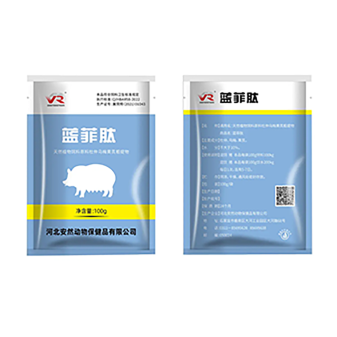- Afrikaans
- Albanian
- Amharic
- Arabic
- Armenian
- Azerbaijani
- Basque
- Belarusian
- Bengali
- Bosnian
- Bulgarian
- Catalan
- Cebuano
- Corsican
- Croatian
- Czech
- Danish
- Dutch
- English
- Esperanto
- Estonian
- Finnish
- French
- Frisian
- Galician
- Georgian
- German
- Greek
- Gujarati
- Haitian Creole
- hausa
- hawaiian
- Hebrew
- Hindi
- Miao
- Hungarian
- Icelandic
- igbo
- Indonesian
- irish
- Italian
- Japanese
- Javanese
- Kannada
- kazakh
- Khmer
- Rwandese
- Korean
- Kurdish
- Kyrgyz
- Lao
- Latin
- Latvian
- Lithuanian
- Luxembourgish
- Macedonian
- Malgashi
- Malay
- Malayalam
- Maltese
- Maori
- Marathi
- Mongolian
- Myanmar
- Nepali
- Norwegian
- Norwegian
- Occitan
- Pashto
- Persian
- Polish
- Portuguese
- Punjabi
- Romanian
- Russian
- Samoan
- Scottish Gaelic
- Serbian
- Sesotho
- Shona
- Sindhi
- Sinhala
- Slovak
- Slovenian
- Somali
- Spanish
- Sundanese
- Swahili
- Swedish
- Tagalog
- Tajik
- Tamil
- Tatar
- Telugu
- Thai
- Turkish
- Turkmen
- Ukrainian
- Urdu
- Uighur
- Uzbek
- Vietnamese
- Welsh
- Bantu
- Yiddish
- Yoruba
- Zulu
Nov . 10, 2024 16:56 Back to list
Oxytetracycline 200 mg/ml for Effective Infection Treatment and Prevention
Oxytetracycline A Comprehensive Overview
Oxytetracycline, a broad-spectrum antibiotic, is derived from the bacterium Streptomyces aureofaciens. It belongs to the tetracycline class of antibiotics, which are recognized for their effectiveness against a variety of bacterial infections. With a molecular structure that allows it to inhibit protein synthesis in bacteria, oxytetracycline has been widely used in both human and veterinary medicine since its discovery in the 1940s.
Mechanism of Action
The primary mechanism through which oxytetracycline exerts its antibacterial effects is by binding to the 30S ribosomal subunit of bacteria, thereby inhibiting the attachment of aminoacyl-tRNA to the ribosomal acceptor site. This prevents the addition of amino acids to the growing peptide chain, effectively halting protein synthesis. As a result, the growth and replication of susceptible bacteria are inhibited, making oxytetracycline particularly useful for treating infections.
Indications for Use
Oxytetracycline is indicated for a wide range of infections caused by susceptible organisms. These include respiratory tract infections, urinary tract infections, skin infections, and certain sexually transmitted diseases. It is also effective against some protozoan infections and can be used in the treatment of acne and rosacea. Its efficacy against a diverse array of pathogens, including Gram-positive and Gram-negative bacteria, makes it a versatile choice in empirical therapy.
In veterinary medicine, oxytetracycline is frequently used for treating infections in livestock and companion animals. Its ability to combat diseases like bovine respiratory disease and other systemic infections underscores its importance in agricultural practices.
Dosage and Administration
The typical dosage of oxytetracycline can vary based on the condition being treated, the patient's age, and weight. For adults, the common dosage is 250 mg to 500 mg every six hours, while children may receive doses adjusted for their size. In veterinary applications, dosages are similarly tailored based on species and specific conditions.
oxytetracycline 200 mg ml

Oxytetracycline can be administered orally or intravenously, depending on the severity of the infection. For oral formulations, the drug is often available in tablets or liquid forms. Intravenous administration is generally reserved for more serious infections requiring rapid therapeutic effects.
Side Effects and Precautions
While oxytetracycline is generally well-tolerated, it is not without side effects. Common adverse reactions can include gastrointestinal disturbances such as nausea, vomiting, and diarrhea. Other side effects may encompass skin rashes and hypersensitivity reactions. Additionally, one notable concern with tetracycline antibiotics is their potential to cause teeth discoloration in children whose teeth are still developing. Consequently, oxytetracycline is typically avoided in pregnant women and young children.
Another important consideration is the potential for antibiotic resistance. As with all antibiotics, the overuse and misuse of oxytetracycline may lead to the development of resistant bacterial strains. Therefore, it is crucial to use this medication judiciously and only when necessary.
Interactions with Other Medications
Oxytetracycline can interact with several other medications, which may affect its efficacy and patient safety. For example, the absorption of oxytetracycline can be impaired by the presence of antacids, iron supplements, and certain other drugs that contain divalent or trivalent metal ions. Patients should be advised to space out the administration of these substances to avoid decreased antibiotic effectiveness.
Conclusion
In summary, oxytetracycline has played a significant role in the field of antibiotics since its introduction. Its broad-spectrum activity, ease of use, and effectiveness against a variety of infections make it a valuable asset in both human and veterinary medicine. However, like all antibiotics, it must be used with care to minimize the risk of side effects and the emergence of antibiotic-resistant bacteria. Understanding its mechanism of action, appropriate dosages, potential interactions, and side effects is essential for healthcare providers to ensure optimal treatment outcomes for their patients. As research continues, the role of oxytetracycline in modern medicine will likely evolve, but its legacy as a cornerstone antibiotic remains firmly established.
-
Guide to Oxytetracycline Injection
NewsMar.27,2025
-
Guide to Colistin Sulphate
NewsMar.27,2025
-
Gentamicin Sulfate: Uses, Price, And Key Information
NewsMar.27,2025
-
Enrofloxacin Injection: Uses, Price, And Supplier Information
NewsMar.27,2025
-
Dexamethasone Sodium Phosphate Injection: Uses, Price, And Key Information
NewsMar.27,2025
-
Albendazole Tablet: Uses, Dosage, Cost, And Key Information
NewsMar.27,2025













